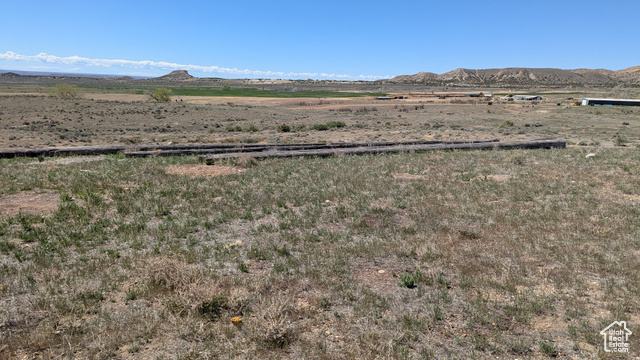The kitchen is often called the heart of the home, and for good reason. It’s where families gather, guests linger, and meals bring people together. But if your kitchen looks dated or has small problems that linger, it can quietly pull down your home’s value.
The unexpected can happen at any time. Property damage from factors like water leaks, natural disasters, or accidents can leave homeowners feeling stressed and overwhelmed. Understanding the proper steps to take after such an event can make a significant difference in how quickly you can restore your home and reclaim your peace of mind.
Recognizing the critical importance of immediate action is key, and knowing how to navigate the challenges presented by property damage can help you mitigate losses and ensure a smooth recovery process.
Consider the Immediate Risks
After experiencing property damage, the immediate risks should be assessed as a priority. Water, fire, or structural damage can introduce hazards that may not be initially obvious. Water damage doesn't just affect visible areas. It can seep into walls and floors, potentially fostering mold growth, which can become a health issue.
Fire damage can compromise structures, while theft can occur amid the chaos following a disaster. It's vital to inspect your property thoroughly to identify unseen threats caused by the events leading to damage.
If a natural disaster causes damage, check for ongoing risks, such as flooding or aftershocks. Always prioritize safety when entering damaged areas. Ensure the stability of all structures before proceeding with any assessments or recovery efforts. This is crucial for your safety and important for preserving your property’s integrity during the restoration phase.
Document the Damage for Insurance Purposes
Before starting any cleanup or repairs, it's crucial to take comprehensive photographs and notes of the damage. This documentation will serve as vital evidence for your insurance claim. Many insurance policies require detailed accounts of the damage, including before-and-after photos, to process claims efficiently. Don’t overlook small details, as they may play a crucial role in your claim approval process.
Make sure to include items that may not be initially visible, such as the condition of hidden walls or under flooring. Track the timeline of events leading to the damage, and step-by-step actions taken immediately after. This organized record will help when discussing your claim with the insurance adjuster. While it may seem tedious now, having this organized record can save you frustrations in the long run.
Contact Your Insurance Provider
Once the damage is adequately documented, contacting your insurance provider should be your next step. Make sure to report the incident as soon as possible, as most policies have a time limit for reporting damage. You’ll need to provide a detailed account, including your documentation, so your provider can process the claim efficiently. It can often be beneficial to have your insurance policy on hand for reference when you call. If you're unsure about what your policy covers, ask your provider directly. Not all damage is covered under standard policies, and understanding the scope of your coverage will help you navigate the subsequent steps.
Your provider may recommend specific restoration companies or offer resources for finding local professionals who can assist with repairs. One important aspect to consider is the impact of your actions on the claim process.
If you undertake repairs before your insurer has assessed the damage, it could limit the scope of your coverage. Therefore, it’s prudent to wait for the insurance adjuster to arrive before beginning any major repairs, ensuring all aspects of the damage are thoroughly examined.
Engage Professional Restoration Services
After making thorough documentation and contacting your insurer, it’s advisable to engage trained professionals for restoration. While DIY repairs might seem tempting, engaging experts can yield better, safer, and quicker results. Companies specializing in restoration are equipped to handle various damage types, from water to fire, and have access to the right tools and techniques to conduct repairs effectively. Proper restoration must often involve more than merely fixing visible damage.
Hidden issues like mold growth or structural vulnerabilities require specialized knowledge and equipment. Engaging a professional service, such as Paul Davis water damage repair, ensures that professionals handle the complications that can arise during the restoration process. Since their expertise is critical in preventing future damage, their input should be seen as an important step in returning your property to its original state.
Alongside immediate restoration, these companies often guide how to prevent future issues. Prevention strategies may include waterproofing measures or regular maintenance checks following restoration work, ensuring the same calamities do not happen again in the future.
Communicate Securely with Professionals
Effective communication with restoration professionals is paramount. Discuss your expectations and specific concerns upfront, allowing them to accommodate your needs accordingly. Whether it's your budget constraints or a particular timeline, communicating these matters facilitates a smoother collaboration. The restoration process can be overwhelming. Maintaining open lines of communication helps reduce anxiety and fosters a better working relationship.
Do not hesitate to ask questions as issues arise during the restoration process. Understanding the procedures and methodologies can clarify the complexity of restoration and reinstate your confidence in the process. Professionals typically welcome inquiries and appreciate it when homeowners engage in their restoration project actively, as this often leads to better outcomes.
Prepare for the Longevity of Recovery
Recovering from property damage is rarely a quick fix. It's vital to have realistic expectations about the duration of necessary repairs and restoration processes. Depending on the severity of the damage, your property could be uninhabitable during repairs, which could extend your recovery phase.
During this time, planning for temporary relocation, finding alternate accommodations, and managing expenses should be part of your strategy for recovery. Insurance providers may assist in covering temporary living expenses. Be sure to confirm this with your insurer. Remaining prepared for potential lengthy timelines ensures you stay focused on long-term recovery rather than feeling overwhelmed by the immediate steps.
Take Steps to Prevent Damage
Once the initial documentation and insurance steps are completed, it’s important to take reasonable action to prevent additional loss. This can include placing tarps over roof damage, boarding up broken windows to discourage unauthorized entry, or removing standing water to limit ongoing destruction.
While it’s crucial not to begin full repairs before the adjuster’s assessment, most insurance providers allow preventive measures that stop conditions from worsening. Keeping receipts and records of these emergency actions can support reimbursement through your insurance claim. Proactive mitigation protects the structure and can significantly reduce long-term restoration costs and health risks, such as mold or mildew growth.
Focus on Your Well-Being Throughout the Process
Home damage recovery affects more than just your property. It takes a toll emotionally and mentally as well. Stress, disruption of routine, financial uncertainty, and temporary relocation can create feelings of instability. It’s important to check in with yourself and your household throughout each stage of recovery.
Leaning on trusted professionals, insurance representatives, and even emotional support networks can lighten the burden. Staying organized, asking for help when needed, and acknowledging progress, no matter how small, can make the process feel more manageable. Recovery is not just about rebuilding walls. It’s about restoring comfort, security, and peace of mind in your home and daily life.
Recovering from unexpected property damage is never easy. Taking swift, informed action can make all the difference. By prioritizing safety, documenting thoroughly, working with professionals, and protecting both your home and well-being, you set the foundation for a smoother recovery. With patience, support, and the right plan in place, restoration becomes more than a process. It becomes a step toward reclaiming stability and moving forward with confidence.












